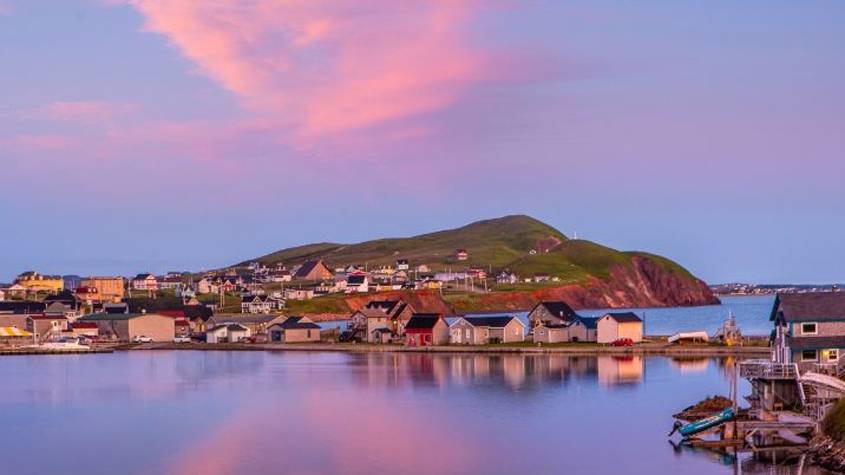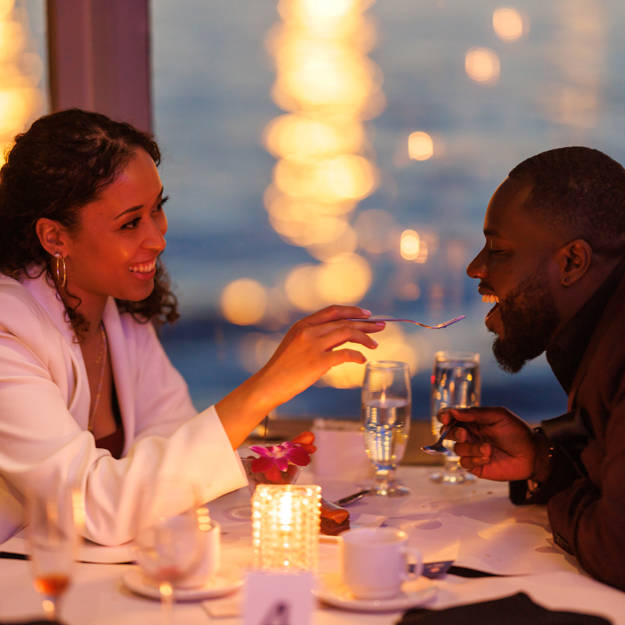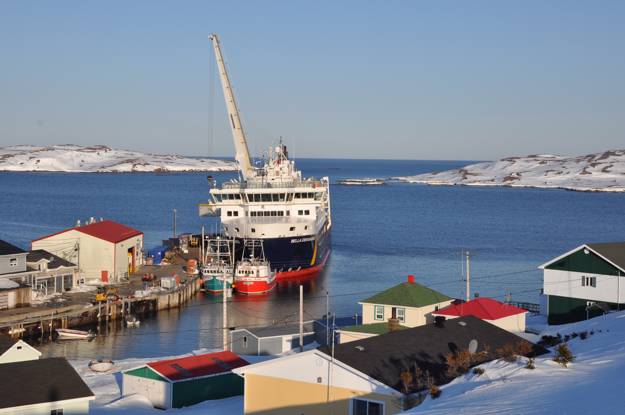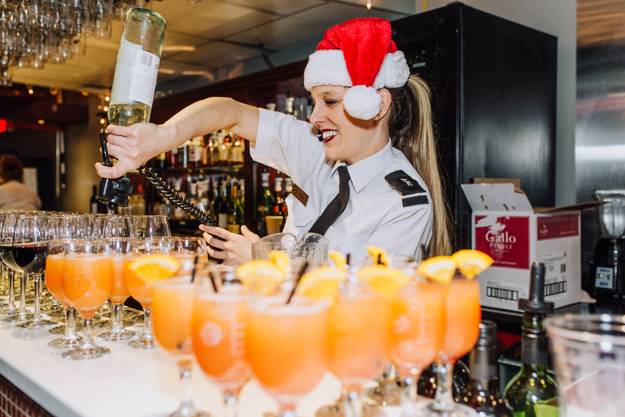Discover the Islands
The Magdalen Islands have numerous treasures just waiting to be discovered. You must know where to look in order to find them. Read this article so you can learn more about this archipelago and its history, before you set food on this land after crossing the St. Lawrence aboard the CTMA Vacancier.
Main economic activities
The Madelinots were able to adapt to their environment and benefit from it. These proud Acadian descendents have long made their living with fishing and agriculture. Even today, they are well known for their prized lobster. However, with the declining fish stocks over the years, other economic activities have emerged to provide a livelihood for the Islanders. Tourism has developed significantly, to the delight of all cruise passengers. Other important sources of income are salt mining and seal hunting.
Fishing and mariculture
If in the past, fishing was very important, today it is much more limited. With the desertion of several species from the St. Lawrence waters for diverse reasons, catches are no longer what they were. However, there are many species you can still enjoy like cod, halibut, mackerel, American plaice, witch-flounder, herring and turbot.
Despite major changes in the marine ecosystem, the Magdalen fishermen are not without resources. The shellfish market has grown considerably in recent years due to the lobster and crab industry. Others have also started to grow molluscs. Thanks to farmed seafood, it is easy to buy mussels, scallops and oysters in the archipelago.
Local products
More businesses are being built around local products. Apart from fishing, the Magdalen Islands offer interesting and varied resources on their lands. Several microbreweries and honey producers have opened their doors, thanks to the many fields and meadows. Some Islanders raise animals and offer local meat and cheeses. Each business finds a new way to pay tribute to the Islands by using what they have at their disposal, whether it is the fauna, the flora or the beaches and their salty air. You will be pleasantly surprised by what you will discover in local boutiques.
Tourism
There are numerous activities on the Magdalen Islands. Whether you wish to admire the beautiful landscapes, take advantage of the open air, discover products, a new culture or benefit from a workshop, you will always find something to do. The Madelinots will greet you and help you discover their extraordinary Islands. You will find several offers on the Tourisme Îles de la Madeleine website or in the all-inclusive packages with CTMA cruises.
History
The Magdalen Islands, as known today, were shaped by a series of stormy events. It all began in 1532 when they were discovered by Jacques Cartier. The first name given was "Les Araynes", meaning sand in Latin to honour the beautiful sandy beaches of the archipelago. Several names were subsequently attributed to them, depending on who passed through at the time. In 1629, referring to Île de Havre Aubert, Samuel de Champlain renamed them "La Magdeleine". They got their current name in 1663, when François Honfleur, wanting to honour his wife Madeleine Lafleur, baptized them "Îles de la Madeleine".
In 1591, French sailors discovered herds of walrus near the Islands and decided to settle there to trade. The envious English came to attack, hoping to take possession of this new resource. However, with the natives' support, the French emerged victorious. This new and scarce commodity gave the Island economic interest.
The Magdalen Islands were under French control for a long time. Several colonization projects were attempted but had little success. They were mostly guerrilla tactics to gain the resources. Due to the wars on the old continent, the Acadian territory was conceded to the British but the Magdalen Islands remained under French influence. This did not prevent it from becoming a political asset that often changed owners during the signing of treaties. The 18th century war played a role in the Islands' evolution and its colonization. Each Island is distinctive. If you listen carefully, you will find different accents, from one Island to another. You can sometimes sense traces of the resident's ancestral baggage, depending on where they came from at the time of these great political debates.
The Islands
Although they are united under the same archipelago, each of the Islands is unique. Local wildlife, attractions, cultural baggage, environment and landscapes distinguishes each Island.
Île d’Entrée
The green hills and the few families on l’Île d’Entrée will remind you, for a moment, of the Highlands in the United Kingdom. Its inhabitants have kept their Scottish roots. It’s the only inhabited island that is not connected to the rest of the archipelago. It gives you the impression of being in a world apart.
There, you can take a walk, set off on an excursion or even visit a few sites. You will discover the tiny Anglican Church, the lighthouse and the small museum. If you decide to go hiking, be sure to visit la butte Big Hill. With a height of 72 metres, it’s the highest peak of the Islands. You will have a breathtaking view of the colourful landscapes and pristine nature. A ferry connects l’île d’Entrée to Cap-aux-Meules on a weekly basis.
Île du Havre Aubert
Territory of the first Acadian pioneers, Havre Aubert has preserved its architecture, testifying its history. It is divided into two main localities, Havre-Aubert and Bassin, each grouping together a few small villages. Probably you’ve heard about Portage-du-Cap, La Baie, La Montagne, L’Anse-à-la-Cabane and L’Étang-des-Caps. You will find everything: breathtaking landscapes, restaurants, cultural sites, boutiques and cafes.
Havre-Aubert’s forest, the most wooded of the archipelago, is a must if you like hiking and forest flora. It’s up to you to choose between the beach and the mountains. If you follow the scenic route, you will see small treasures such as the solitary rock Corps Mort (dead body), the L’Anse-à-la-Cabane lighthouse, the fishing port and the majestic sunsets.
Cultural region par excellence, the Island is a historic site worth visiting. La Grave (from the word beach) is a small pebble beach that used to be a trading post for fishermen and traders. It is still today a privileged commercial site.
Île du Cap-aux-Meules
Île du Cap-aux-Meules is a perfect blend of nature and urbanism. This is explained by its large population. It actually has the largest concentration of people in the whole archipelago. You will find all the services and shops you need: hospital, comprehensive school, CEGEP and thermal power station.
The inhabitants are scattered in three villages: Fatima, Cap-aux-Meules and L’Étang-du-Nord.
Although Fatima is the youngest village on the Island, this is where you will find the Dune du Nord and Belle Anse beaches. The beaches and the cliffs offer a breathtaking contrast.
Cap-aux-Meules gets its name from the grindstone found in the cape overlooking the harbour. An important Port City, it is the main meeting point of the Island. In addition to its fishing activities, it offers a path along the coast that pedestrians and cyclists appreciate. You will find Tourisme îles de la Madeleine and its Information Center. It is also in the Port of Cap-aux-Meules that the CTMA Vacancier anchors during its stopover on the Island.
Located west of Cap-aux-Meules, the village of L’Étang-du-Nord has a scenic route, the Chemin de Gros-Cap, overlooking the Baie de Plaisance. A little farther, it is possible to visit the Parc de Gros-Cap. You will be impressed by its cliffs and caves.
Île du Havre aux Maisons
You won’t find a tree on l’île du Havre aux Maisons but a forest of colourful houses. The traditional architecture of this village testifies of the typical Madelinian occupation. Its inhabitants are also very proud of their Island, as it is considered one of the prettiest of the archipelago.
This colourful Island also owes the beauty of its landscapes to its South and North dunes of scarlet sand. It is possible to take the panoramic road of Pointe-Basse on foot, by bike, or by car to discover its natural beauty. Its winding roads through valleys and plateaus will charm you.
The small harbour of Pointe-Basse has long been in the smoked herring business. The Fumoir d’Antan offers visitors the possibility to discover and relive this old trade that once played a crucial role in the economy of the Island.
Île de la Pointe-aux-Loups
The smallest inhabited island of the archipelago, île de la Pointe-aux-Loups, remains one of the most beautiful islands of the archipelago. It has two long un-crowded beaches between Fatima and Grosse Île. To the west is Dune du Nord and to the east Pointe-aux-Loups. If you are looking for a moment of tranquillity and serenity, it’s the perfect place.
Île de Grosse Île
Shaped by the Scottish roots of its inhabitants, Grosse Île has preserved a traditional way of life, punctuated by fishing and agriculture. Its community now lives mainly from fishing and fish transformation. However, it doesn’t hinder the presence of other economic activities such as the exploitation of its salt mine, very impressive by the importance of its facilities.
Typical places, such as Pointe Rockhill, East Cape and Old Harry, will allow you to discover the real beauty of the Islands with its wooded slopes tumbling to the sea, leaving you pensive and amazed.
Old Harry was the favourite spot for the famous walrus hunt. They were slaughtered and the extracted oil was commercialised. Unfortunately this species has completely disappeared from the Islands. But if you follow the haul-outs, you may find the rocky places where these animals loved to bask, close to each other, in the sun. Perhaps you’ll feel like doing the same.
Île de Grande Entrée
If you are passionate about seafood, you will be delighted with Île de Grande Entrée, designated lobster capital since 1994. With its 100 brightly coloured lobster vessels, Grand Entrée generates more than half of all lobster caught on the Magdalen Islands. In addition to lobster, you will find a mussel farm cultivating blue mussels in the bay of Grand Entrée.
Take the scenic route to Île de Boudreau. You will discover one of the most beautiful panoramas of the Islands. This small isolated spot with its beaches will make you feel like you are completely alone in the world.
Île de Brion
Once inhabited, Île de Brion is now deserted. However, don’t be deterred by its difficult access, its tranquility and lack of human activity has allowed the establishment of the most diverse ecosystem of the Magdalen Islands. Today, Brion is considered an ecological reserve. Ornithology enthusiasts will be delighted to observe more than 166 bird species. Hundreds of different plants, including several rare species, reflect the pre-colonization flora of the Islands.
Although the Island is no longer inhabited by its Scottish and Acadian occupants of the past, it is still inhabited by mysterious tales about fishermen and lighthouse keepers who once set foot on its soil. If you visit the lighthouse, in addition to its legends, you can observe the rich flora and several bird species.
Each Island has its share of history to tell. We hope that with this information you will recognize the signs of their past and truly appreciate your experience on Îles de la Madeleine. Have a great cruise and enjoy the discovery.




